Namhun Sung, Red Island
The massacres on the South Korean island of Jeju began in April, 1948, and were kept secret for a long time. Thousands of the inhabitants died in the wake of uprisings against the locally-imposed government. Making use of damaged large-size Polaroids, the Korean photographer (born 1963) found an unusual format and imagery for his “Red Island” series, capturing the island’s gruesome past.
Index
Detail
|
Image x
18 Images
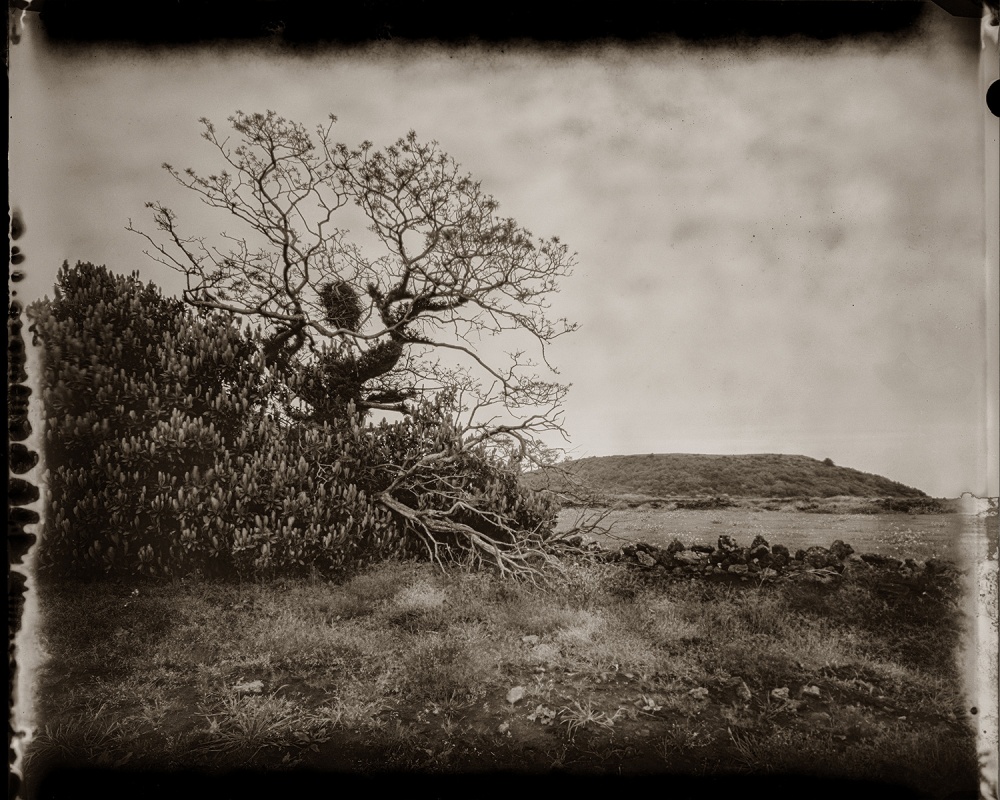 01
01
The Akkeun-Darangshi Oreum volcanic cone near the village of Darangshi. On December 18, 1948, eleven villagers from Hado-ri and Jongdal-ri who had sought refuge in Darangshi Cave were murdered; Jeju 2019.
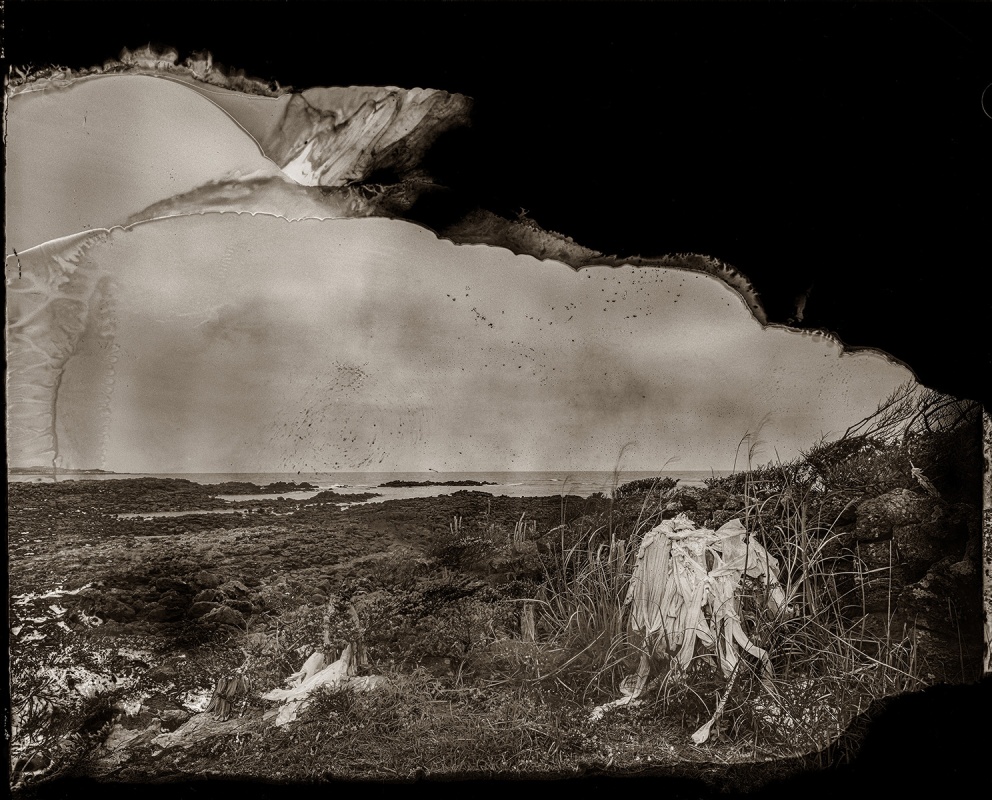 02
02
As a humble protector of the Haenyeos (female divers), Haesindang Shrine appears to be gazing indifferently at all the joy, anger, sorrow, and happiness arising from the ocean; Dolgae Halmangdang Shrine, Onpyeong-ri, Seongsan-eup, Jeju 2019.
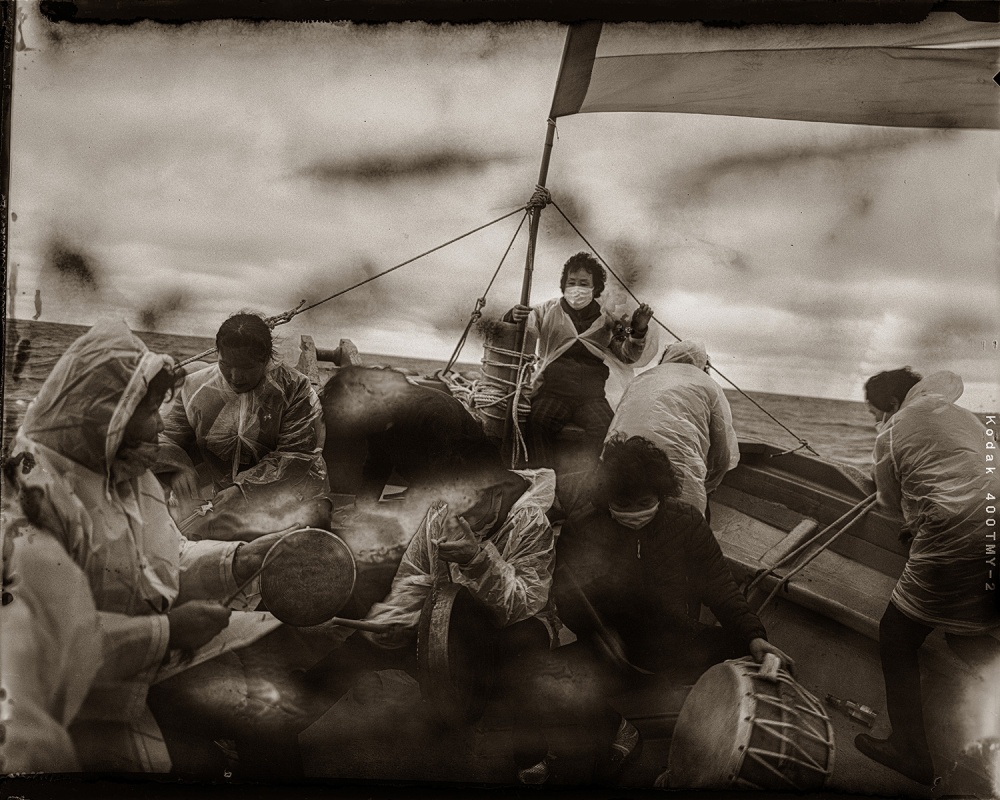 03
03
On January 17, 1949, 350 villagers from Bukchon were shot in reprisal. The village was set on fire and almost all the men were killed; but the village was kept alive by the tenacious will of the women, especially the Haenyeo. Haenyeo Gut (female divers’ shamanic religious ritual); Bukchon-ri, Jocheon-eup, Jeju 2020.
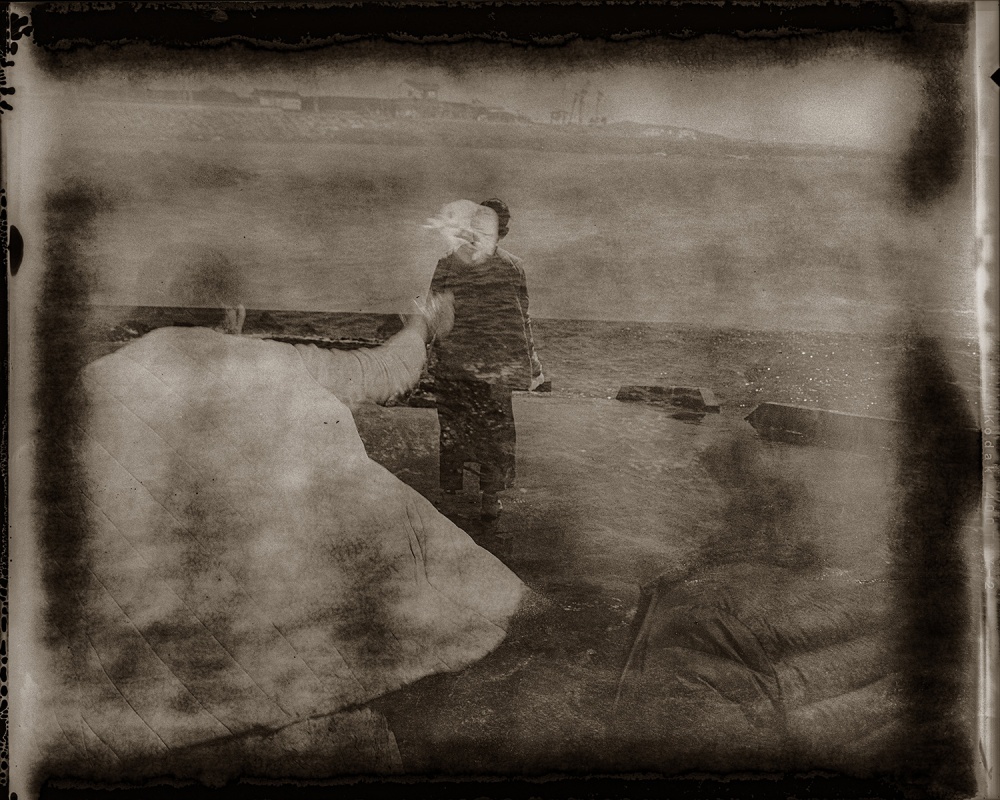 04
04
Every February, Jeju becomes the Island of the Gods. Yeongdeung Gut, one of the representative Haenyeo Gut (female divers’ shamanic religious ritual), is performed in each village, with prayers for safety and peace to the god of the wind; Taeheung-ri, Namwon-eup, Jeju 2020.
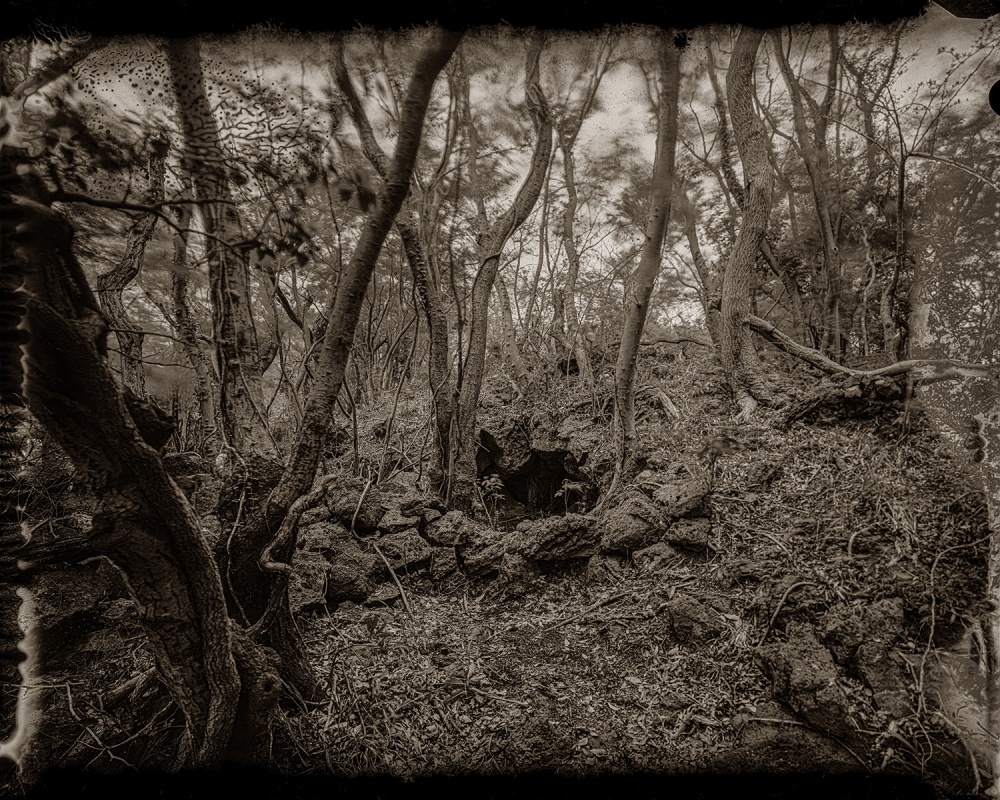 05
05
Around 120 villagers from Andeok-myeon and Donggwang-ri were killed after being discovered in the Keunneolgwe lava tube, where they had been hiding for about two months. Cave near the Keunneolgwe, Donggwang-ri, Andeok-myeon, Jeju 2019.
 06
06
22 villagers from Nameup-ri and Jangjeon-ri were killed in the Billemotdonggul lava tube. In spring, beautiful cinquefoil flowers bloom around the cave, which is considered a metaphor of mourning; Billemotdonggul lava tube, Eoeum-ri, Aewol-eup, Jeju 2019.
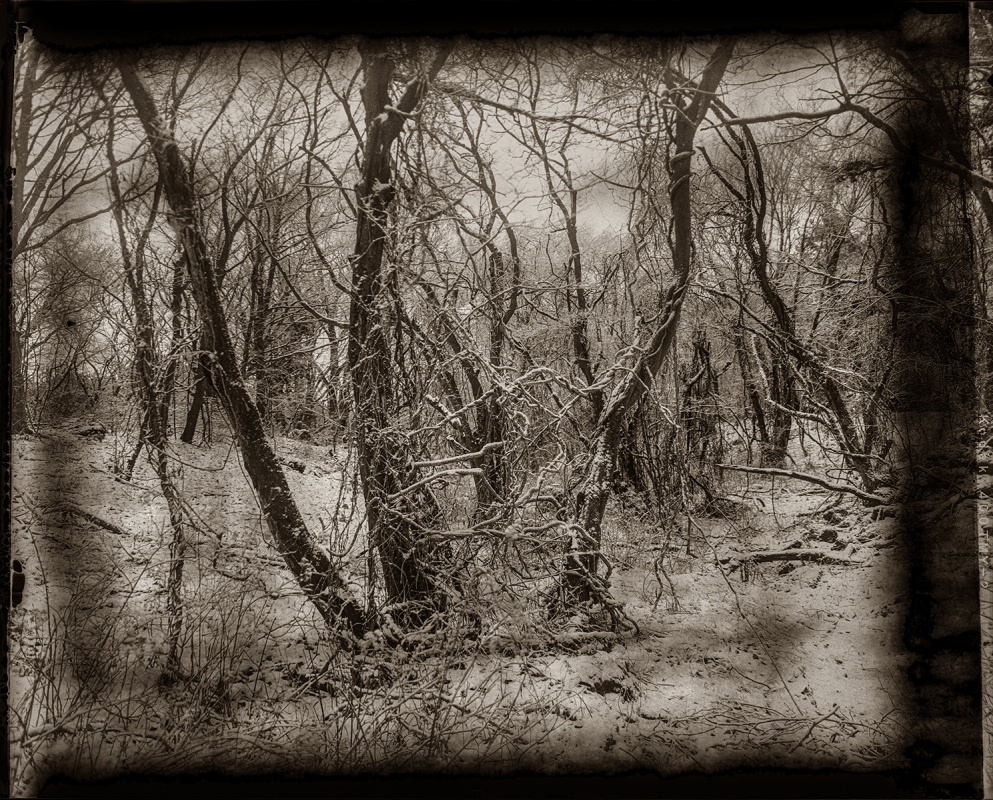 07
07
They had no other choice: despite the unsuitable clothing and shoes, the villagers fled to Mount Hallasan in the exceptionally cold and snowy winter. Valley on the way to Eorimok, Hallasan mountain, Jeju 2020.
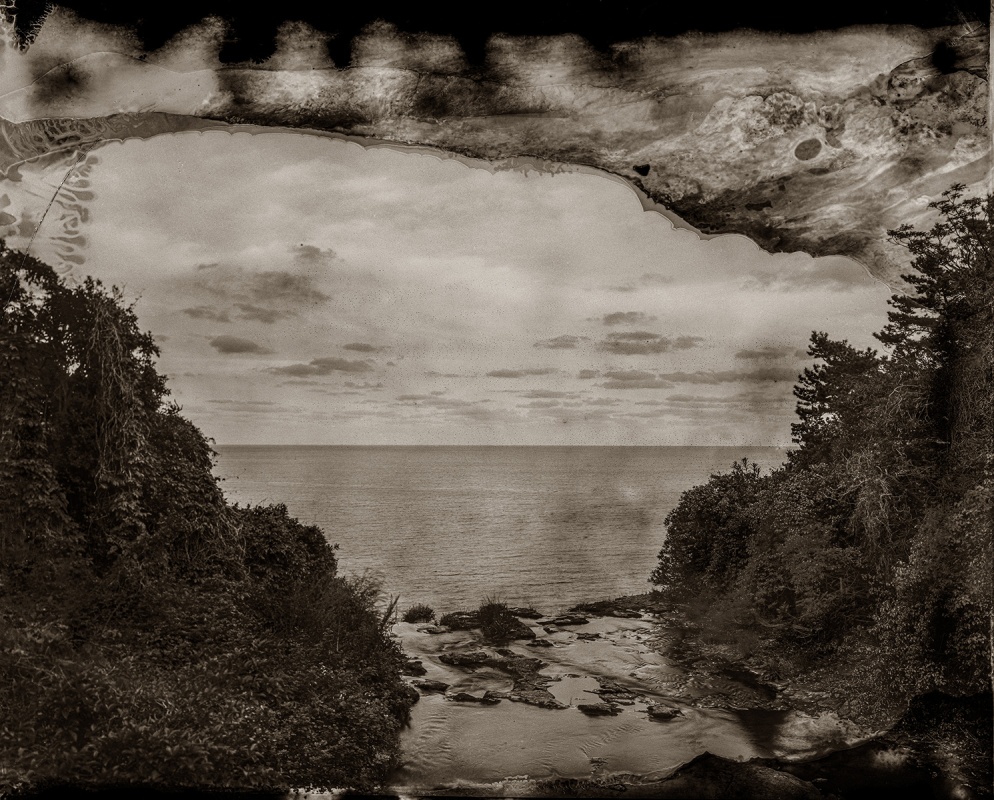 08
08
Today Jeongbang Falls is a tourist attraction; once it was the site of a massacre. Donghong-dong; Jeju 2019.
 09
09
At today’s tourist attraction of Jeongbang Falls, people were once tied up, then shot or thrown down the waterfall. The waterfall swallowed their screams and the ocean was stained with blood; Donghong-dong, Jeju 2019.
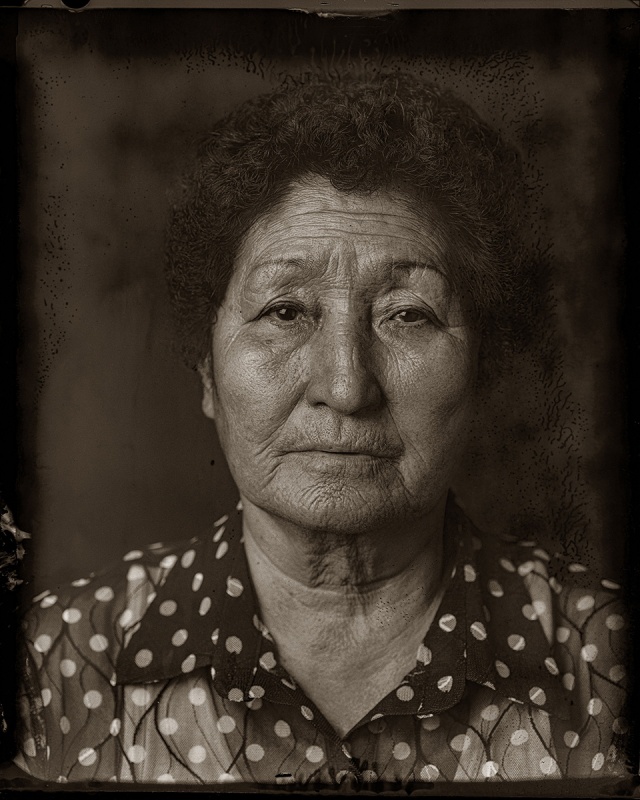 10
10
Lee Seong-ja, 81 years old. Her village was set on fire, and her family members shot. Young female survivors from Bukchon were not allowed to go to school, but kept the village alive by mostly learning to become Haenyeo (female diver); Bukchon-ri, Jeju 2019.
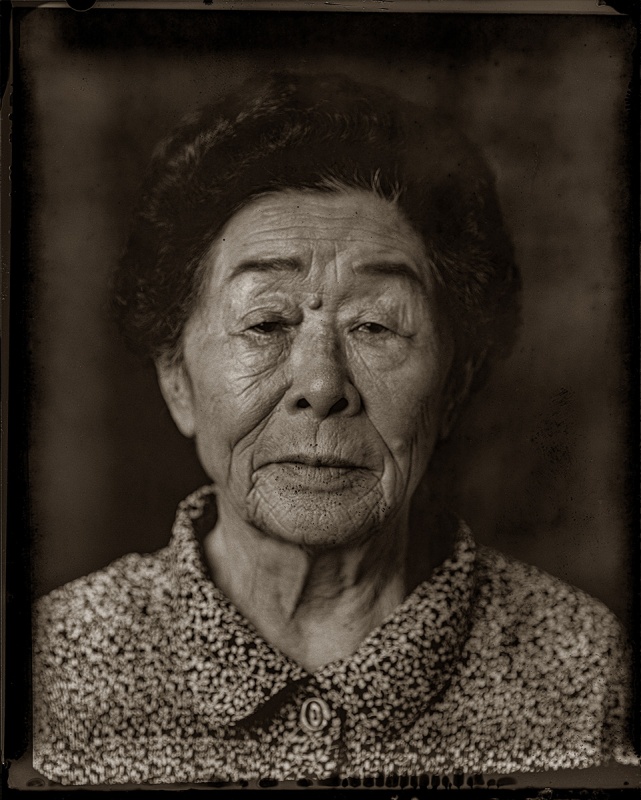 11
11
Kim Gye-hwa, 88 years old. Her village was set on fire, and her family members shot. Young female survivors from Bukchon were not allowed to go to school, but kept the village alive by mostly learning to become Haenyeo (female diver); Bukchon-ri, Jeju 2019.
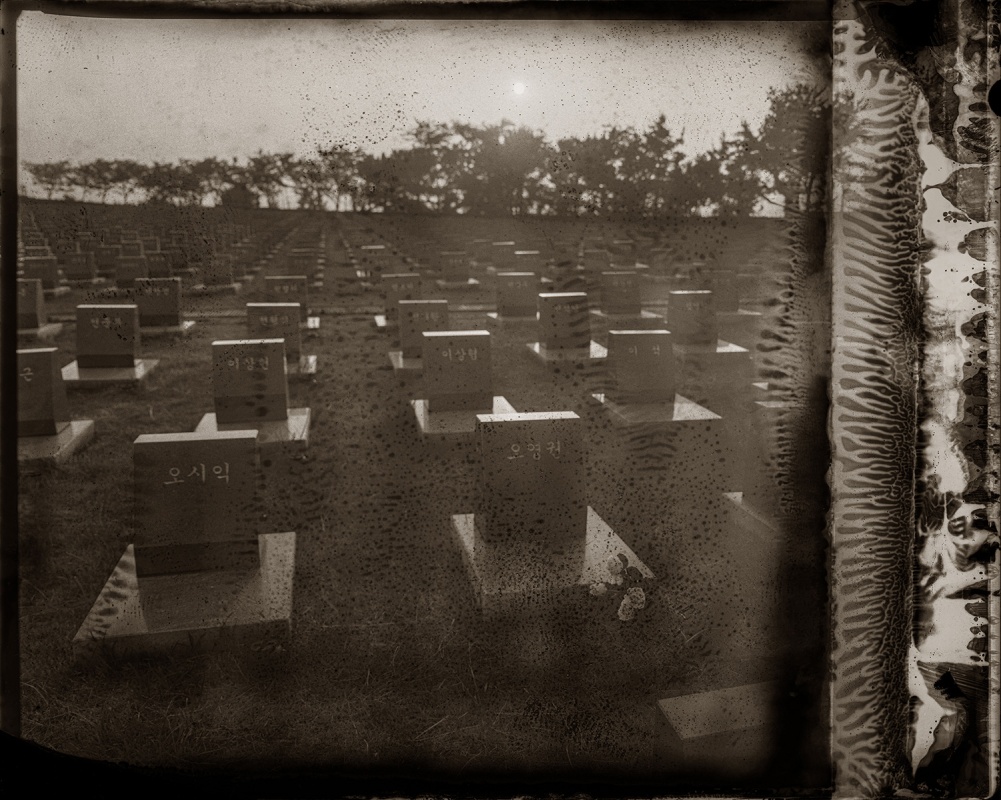 12
12
Memorial park for the victims of the massacres, whose bodies have not been found. A total of 3,896 memorial stones have been erected; 4.3 Peace Park, Bonggae-dong, Jeju 2019.
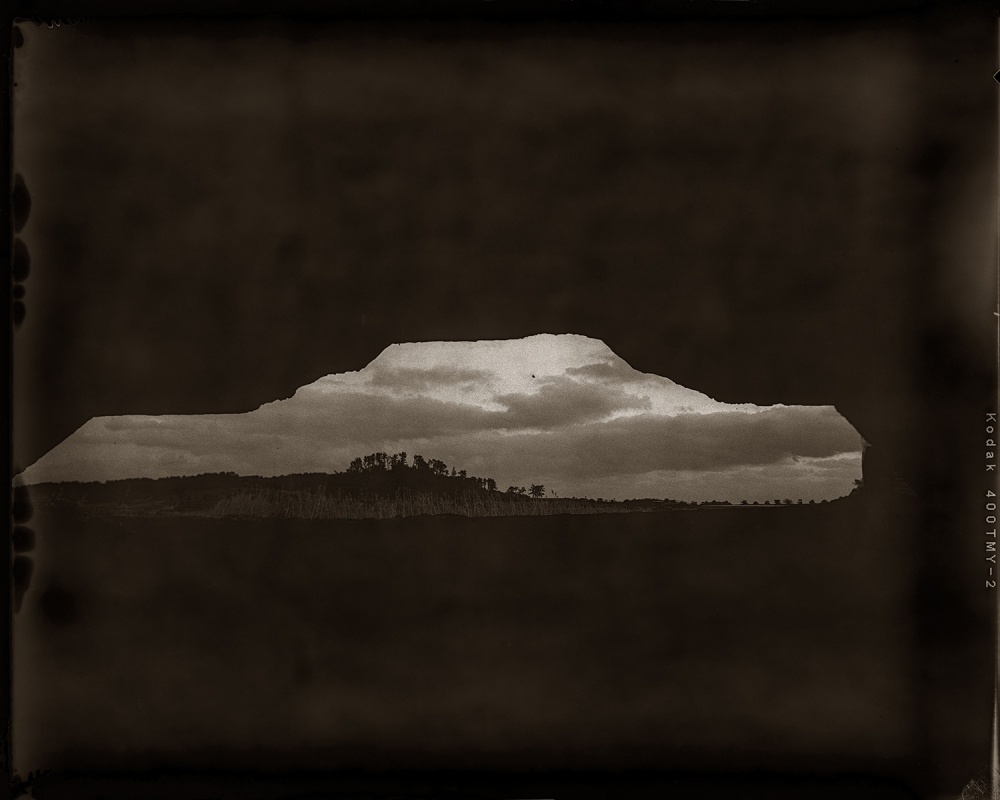 13
13
Airfield where the military hangars from the Japanese colonial era are located, and which became a place of forced labour and a battlefield during the Korean War. Hangar at Alddreu airfield, Sangmo-ri, Daejeong-eup, Jeju 2020.
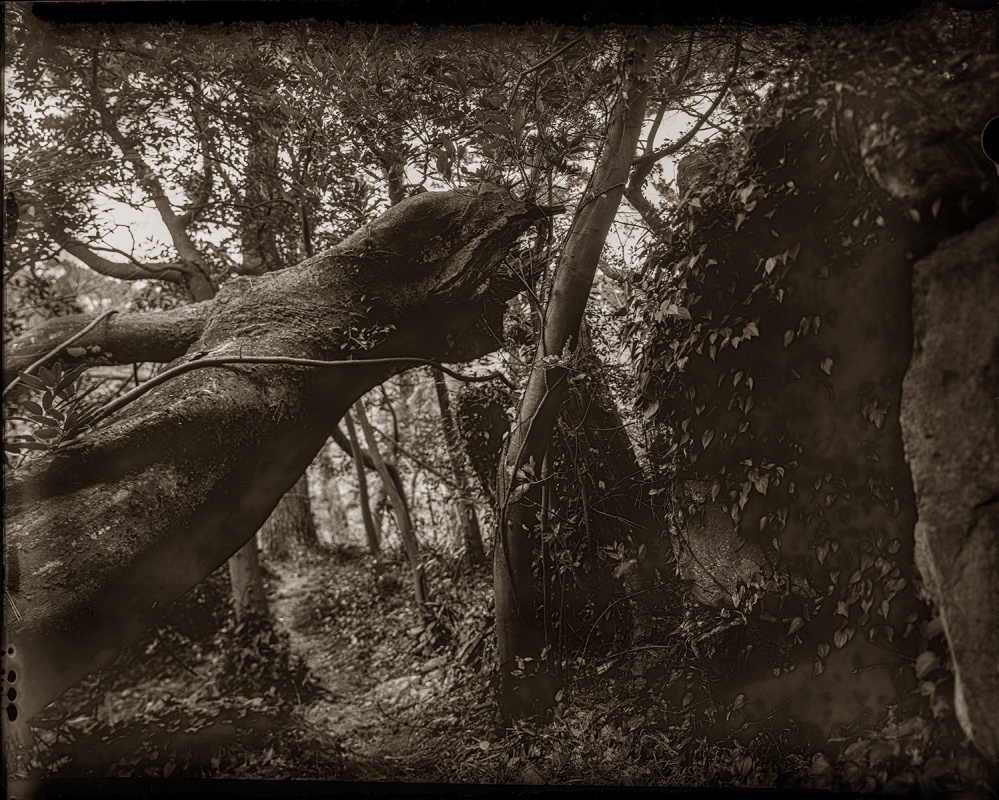 14
14
To survive, people left the villages and hid in the dark caves of Gotjawal or Hallasan Mountain; Wolpyeong-dong, Jeju 2020.
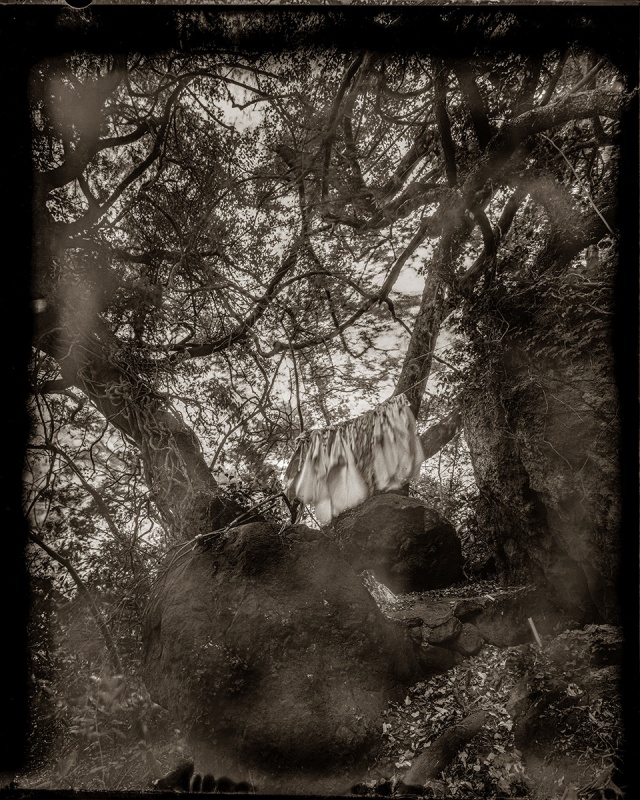 15
15
At the shrines at the entrances of Jeju villages, big old trees and stones stand proud and upright. These are the places of pain, consolation and prayers for peace for the survivors, who were formerly not allowed to tell their stories; Bonhyangdang Shrine of Daepo-dong, Jeju 2019.
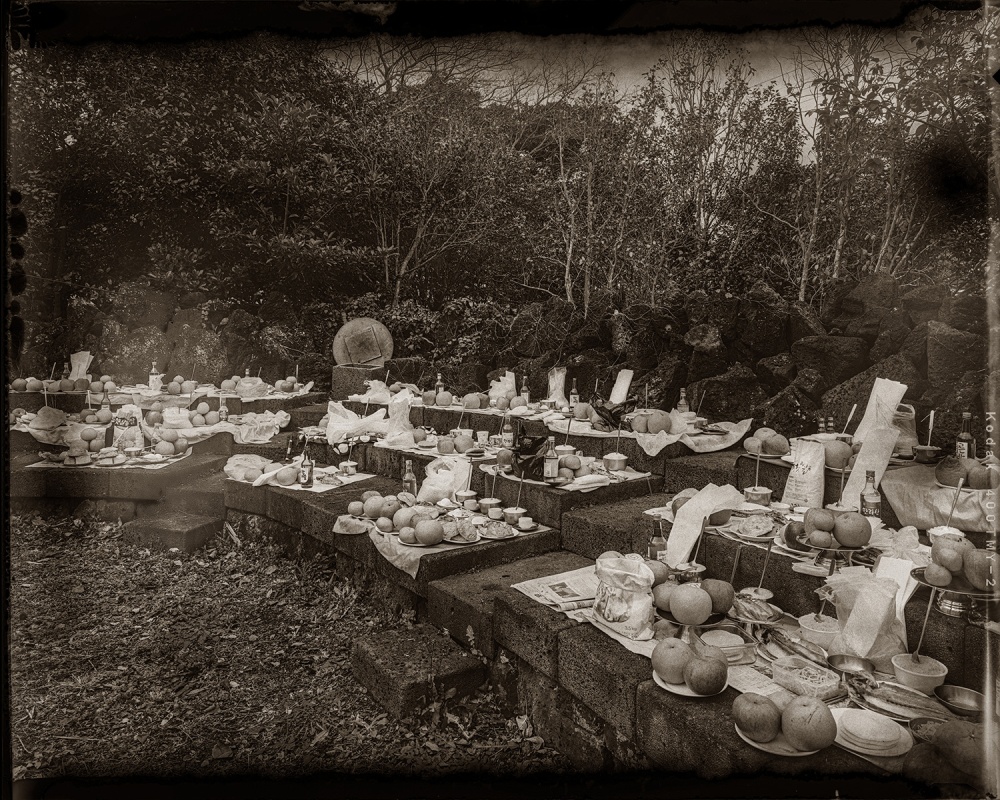 16
16
All villagers gather twice a year for Dang Gut (shamanic religious sacrificial ritual) at Bonhyangdang Shrine, Waheul; Jeju 2020.
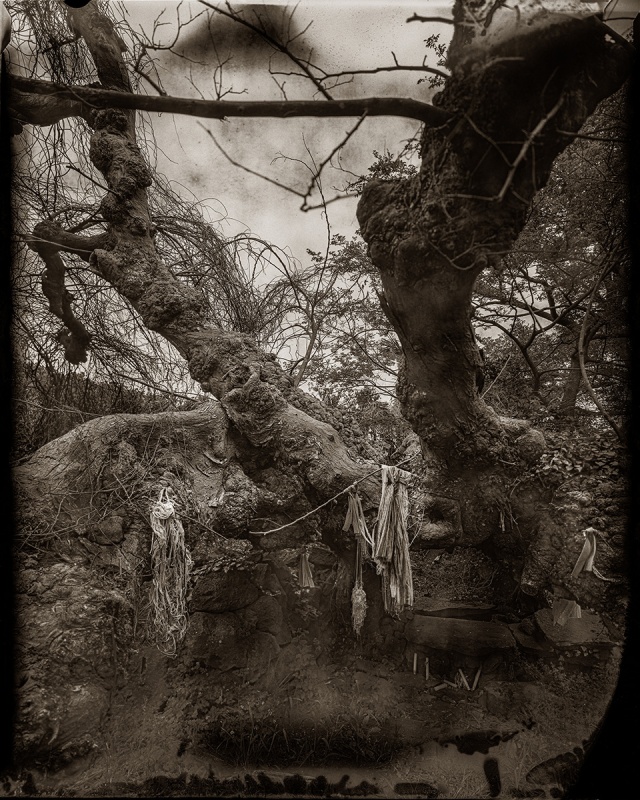 17
17
At the shrines at the entrances of Jeju villages, big old trees and stones stand proud and upright. These are the places of pain, consolation and prayers for peace for the survivors, who were formerly not allowed to tell their stories. Bonhyangdang Shrine of Gwangpyeong, Aewol-eup, Jeju 2019.
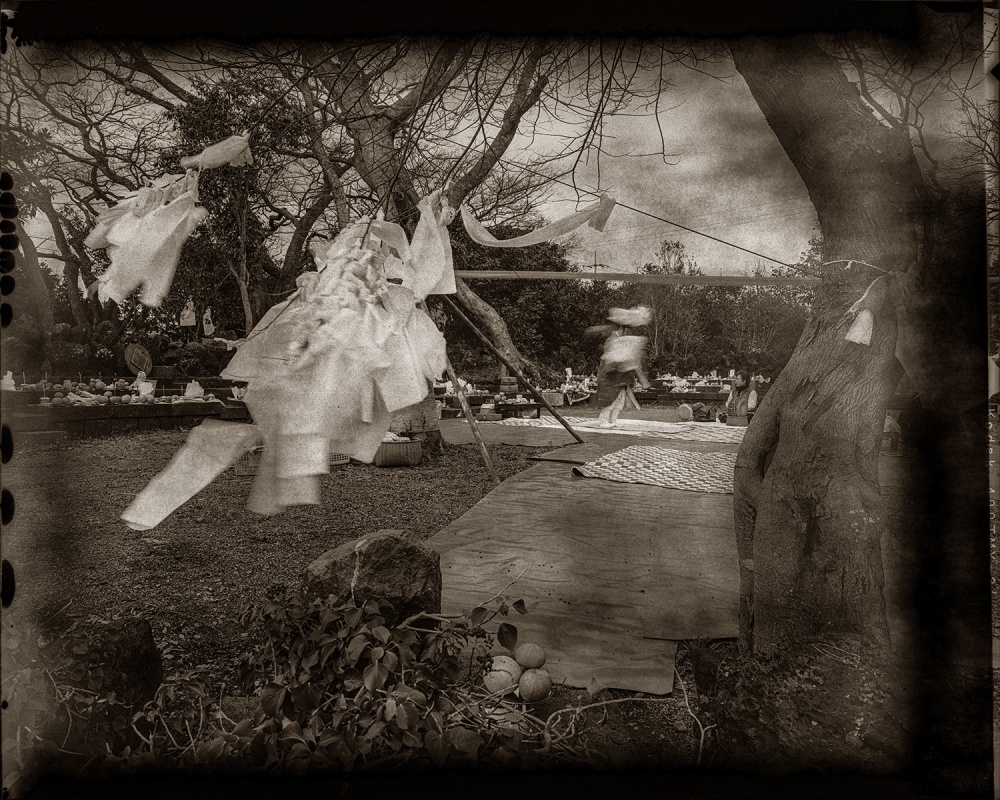 18
18
All villagers gather twice a year for Dang Gut (shamanic offerings ritual) at Bonhyangdang Shrine, Waheul; Jeju 2020.
010203040506070809101112131415161718